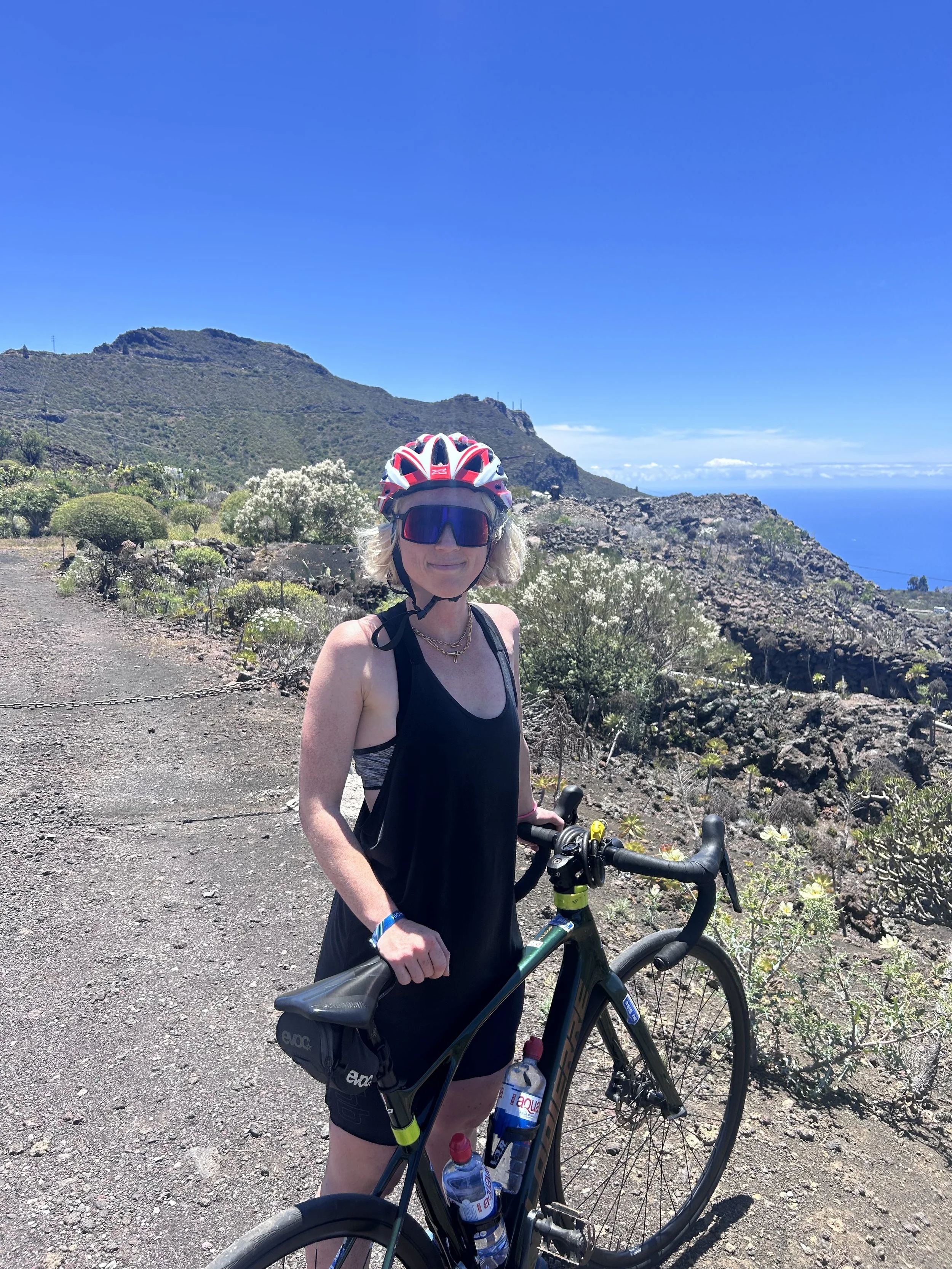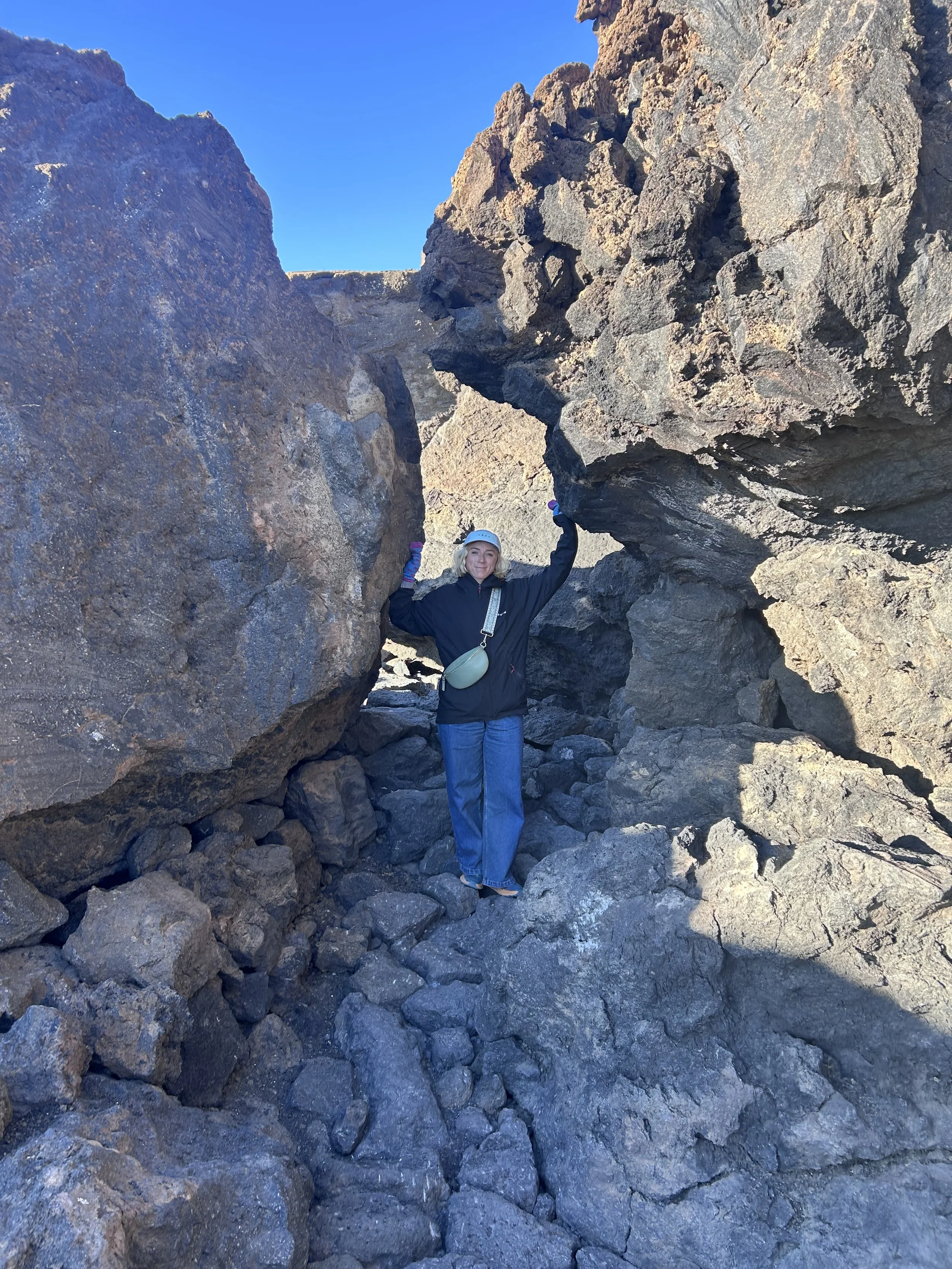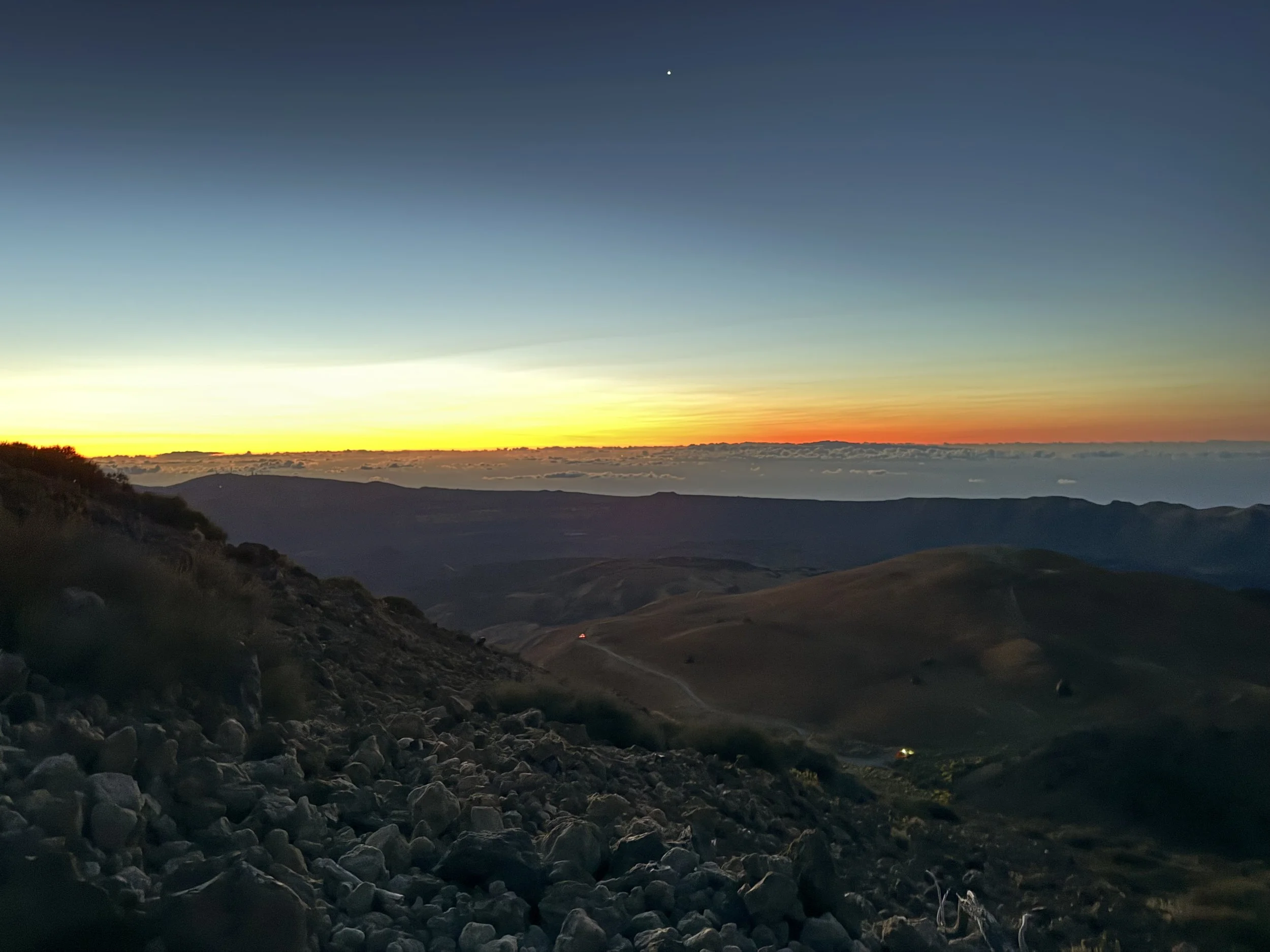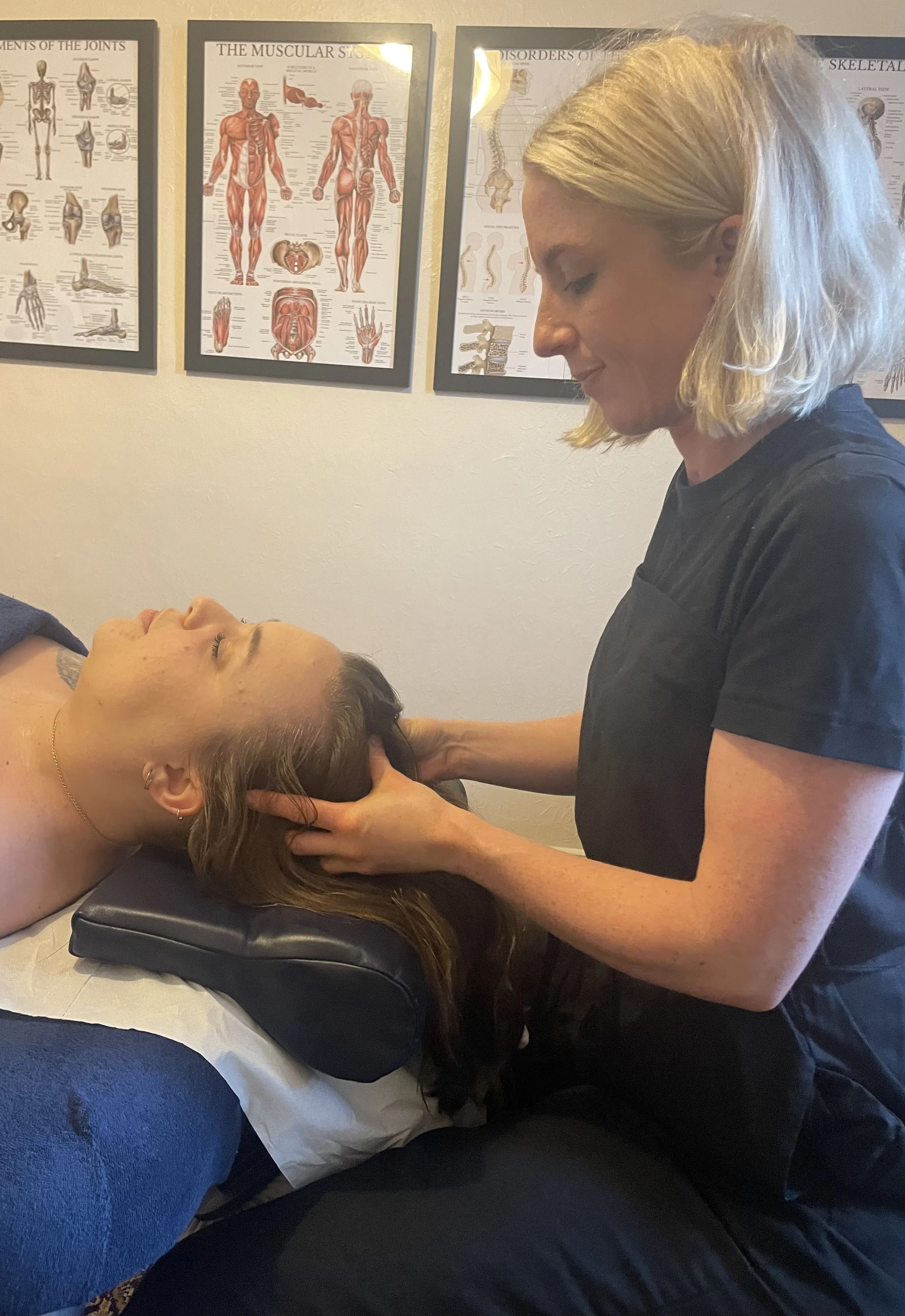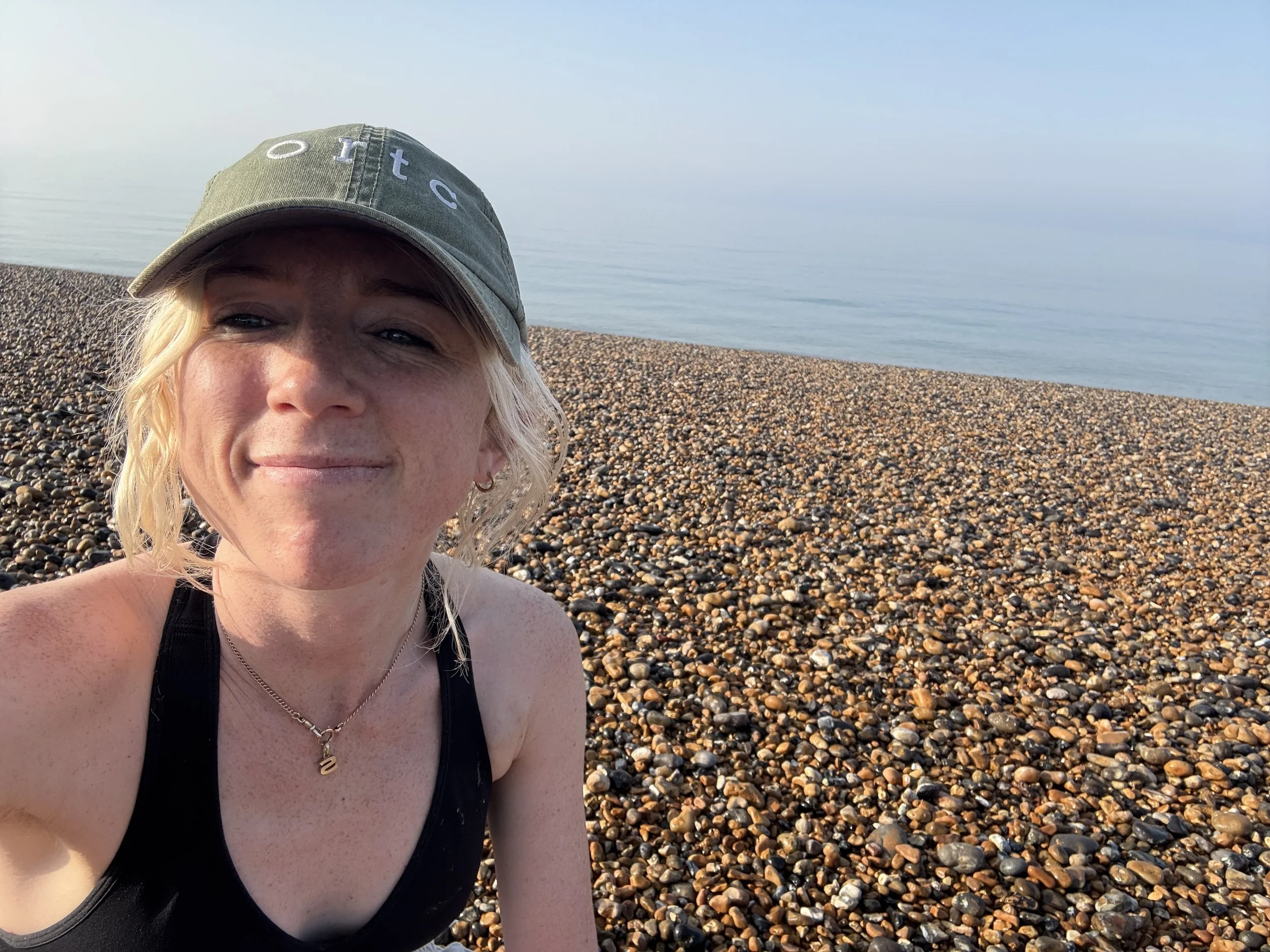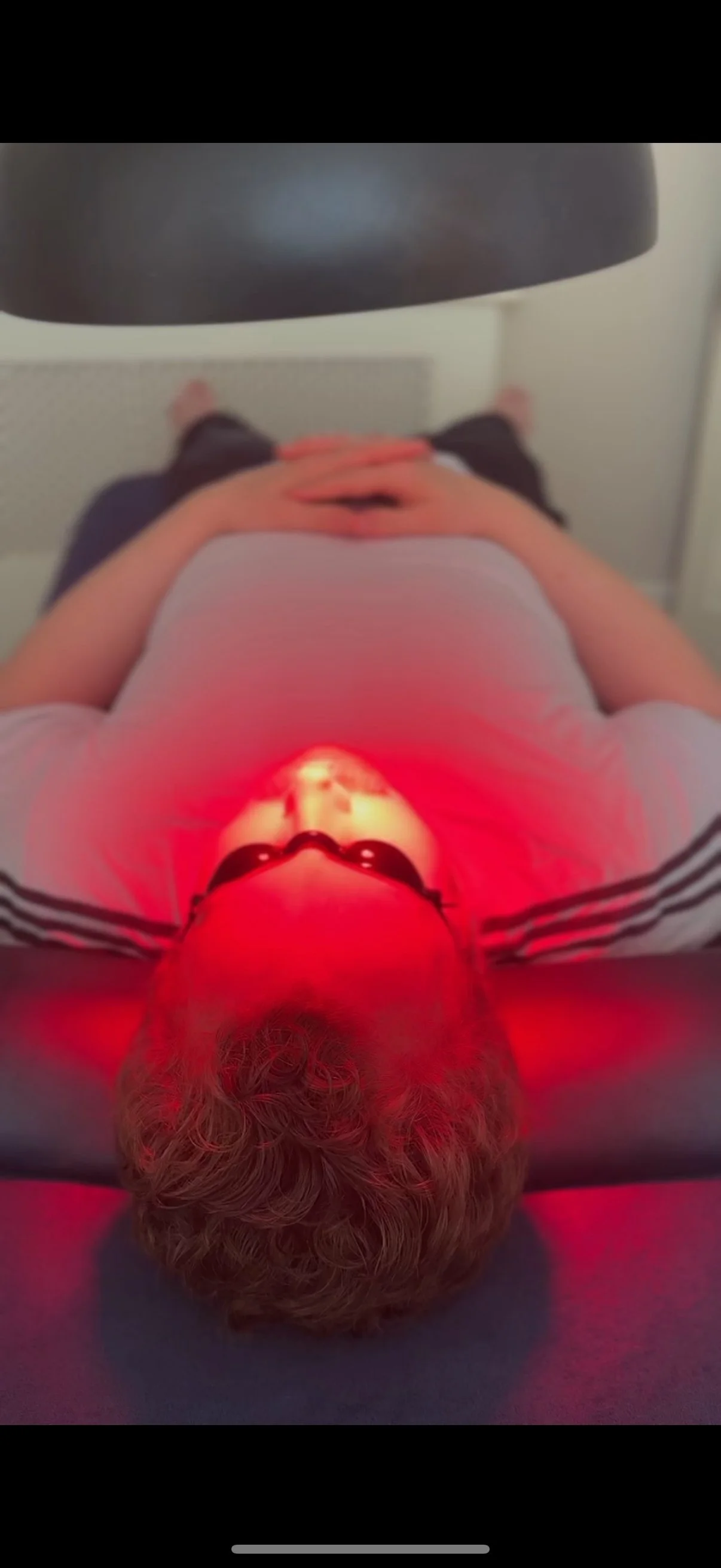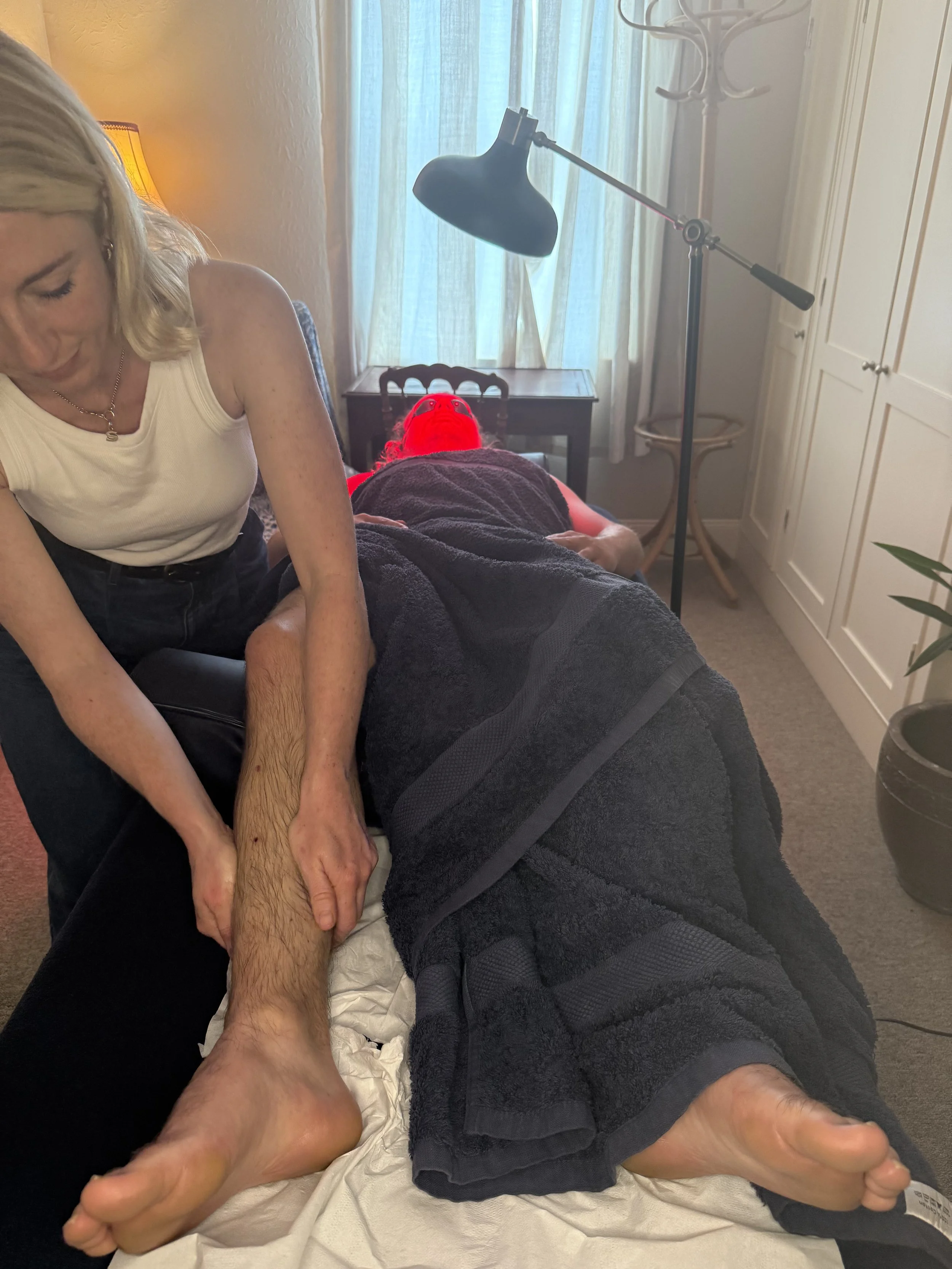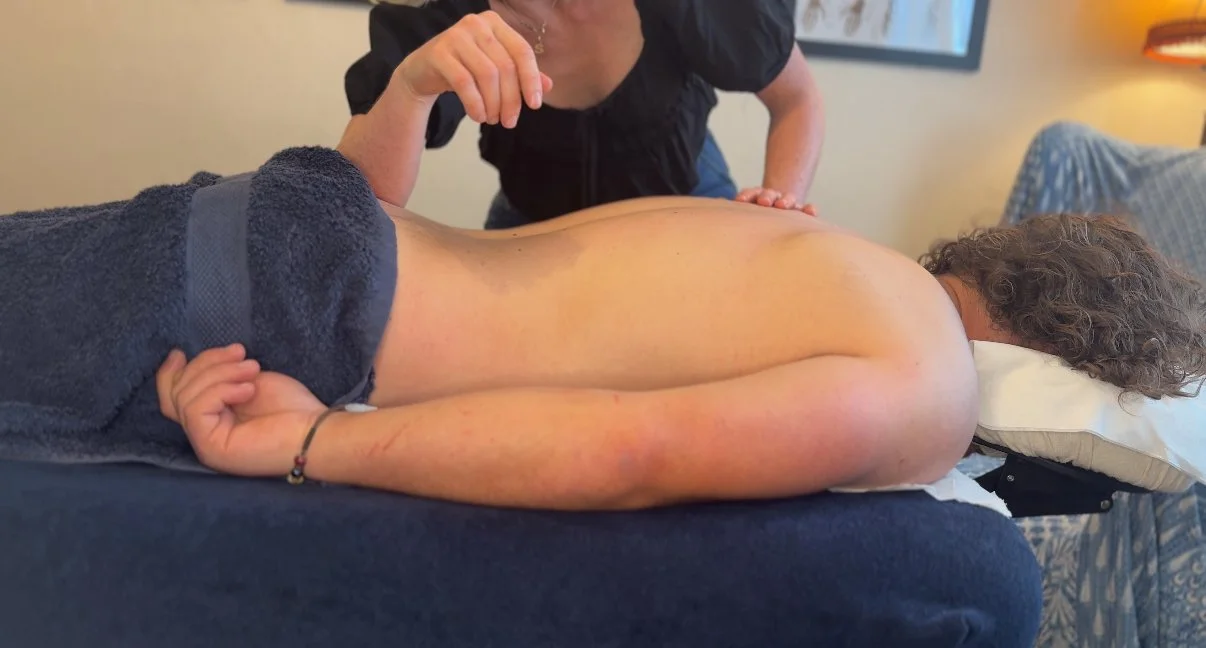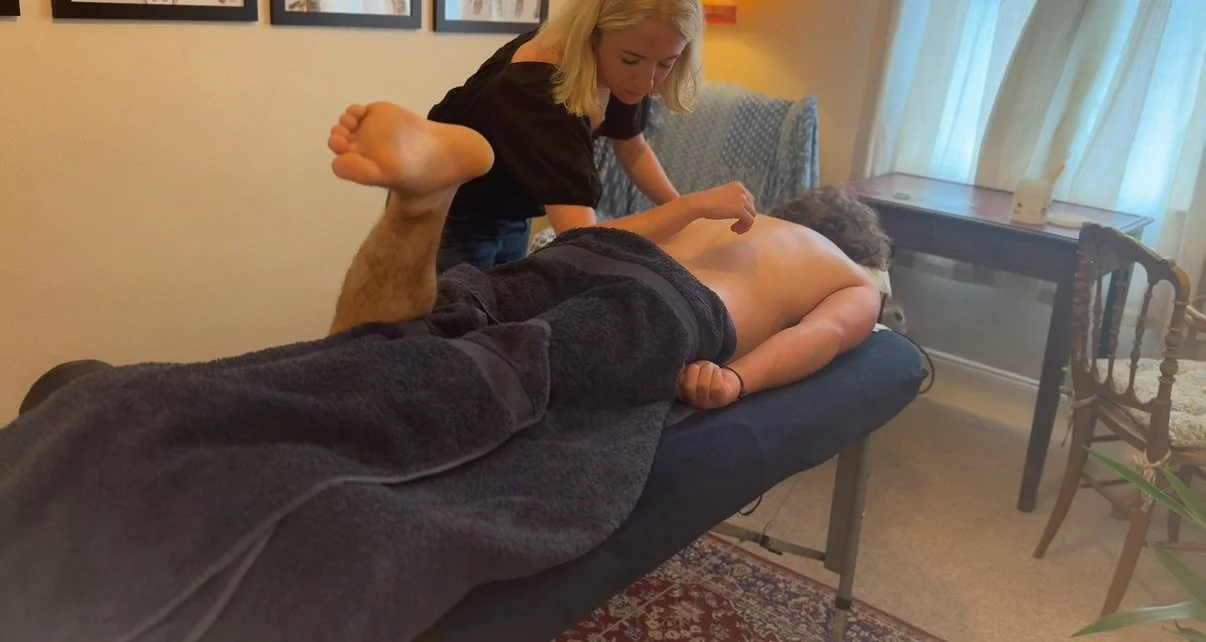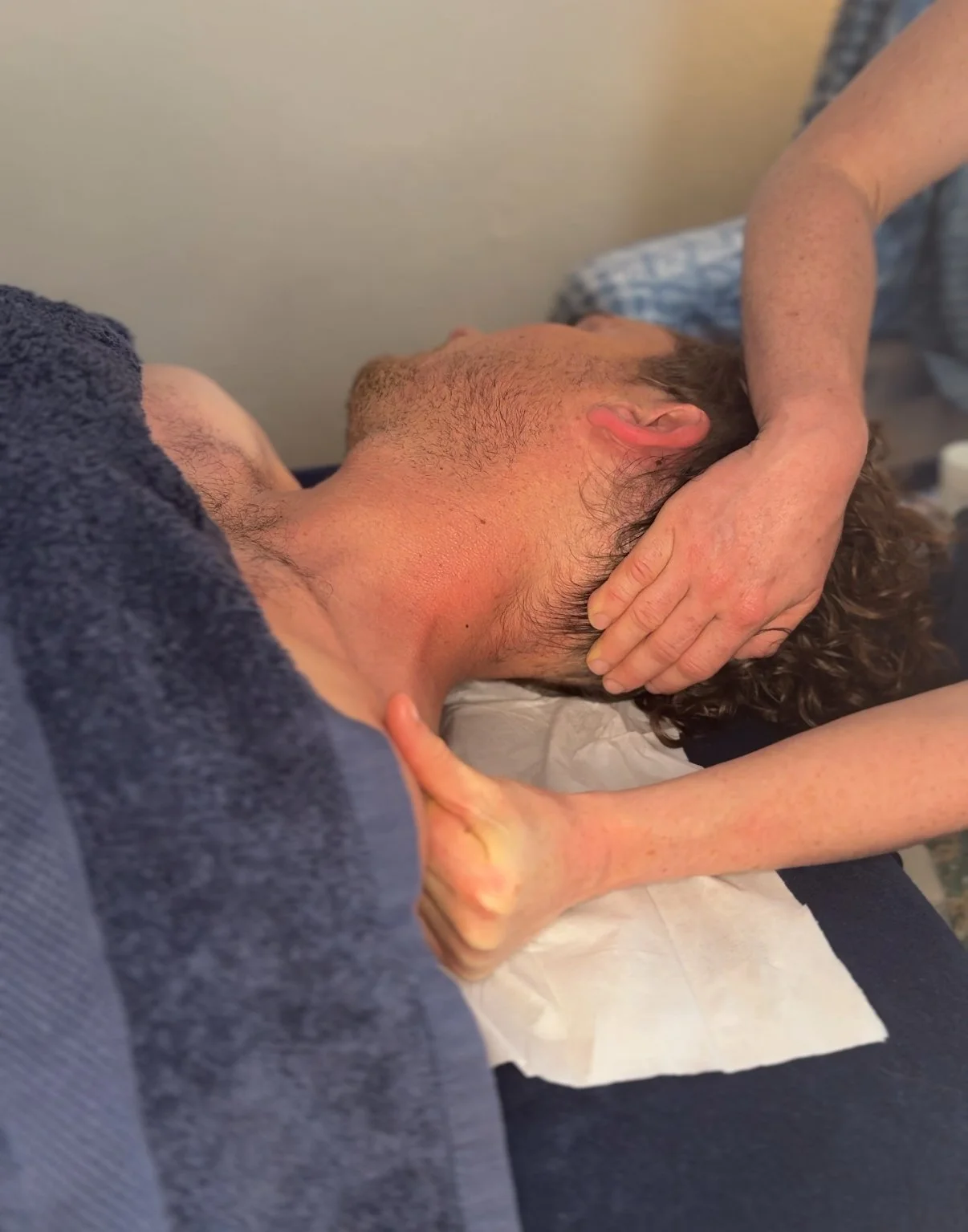Happy Staff, Thriving Business: Why Workplace Massage Isn’t Just a Perk. It’s a Powerful Investment
In today’s fast-paced work culture, stress, screen fatigue, and physical tension have become the norm, but it doesn’t have to be that way. Prioritising employee wellbeing isn’t just good ethics; it’s smart business.
At Well Health Therapy, we help Bristol-based companies reduce stress, boost morale, and improve physical wellbeing, all through on-site mobile massage. Whether you’re rewarding your team or creating space to breathe in a high-pressure environment, our tailored treatments meet your staff exactly where they are, physically and emotionally.
Why Invest in Workplace Wellbeing?
For employees:
Reduces stress, anxiety, and burnout
Relieves tension, improves posture and flexibility
Encourages better focus and mental clarity
Boosts morale and overall job satisfaction
For companies:
Improves productivity and performance
Strengthens retention and employee loyalty
Demonstrates commitment to staff wellbeing
Enhances company culture and brand reputation
How Our Workplace Massage Works
We offer flexible, fuss-free options to suit any workplace or budget, whether you’re running a one-off wellness day or a regular clinic. All equipment is provided, and treatments are designed to slot smoothly into your team’s day.
1. Company-Paid (Fully Subsidised)
Best for: Staff rewards, wellness days, morale boosters
Typical pricing:
• Full day (8 hrs): £280 + travel (8 - 32 employees / day)
• Half day (4 hrs): £140 + travel • 15–30 min treatments (8 - 16 employees/day)
1 person £52.50 (per hr), 2 people £50 (per hr), 3 people £47.50 (per hr), Reduces £2.50 (per hr) down to £35
2. Part-Subsidised (Co-Pay Model)
Best for: Companies with a smaller wellbeing budget but big ambitions. 30-min treatment: £30 • Company pays £15, staff pays £15 via booking link
3. Staff-Paid (Space Provided)
Best for: Monthly wellbeing clinics in-office. Low-budget workplaces offering space
Typical pricing: • 20-min: £25 • 30-min: £35 • 45 min: £45 • 60-min: £52.50
Treatment Options
On-Site Chair Massage
Oil-free and clothed
15–30 min treatments
Ideal for head, face, back, and shoulders
No disruption to workday or clothing
At-Desk Massage
Fast, focused treatment (15–20 mins)
No setup or room needed
Ideal for open-plan teams
Table Massage (this requires a separate room to set up in)
30–60 min treatments
Perfect for chronic tension, stress, or pregnancy
Oils, wax, or clothed sessions available
Adapted for second trimester and beyond
What We Offer at Well Health Therapy
Sports Massage
Soft Tissue Therapy
Pregnancy Massage
Indian Head Massage
Swedish Massage
Deep tissue
Cranial Sacral Therapy
Whether your team needs to reset from physical strain, soothe mental overload, or simply feel cared for, we’re here to help.
Based in Bristol. We Come to You
All equipment is provided. All treatments are tailored. All you have to do is open the door.
Let’s create a workplace where wellbeing isn’t an afterthought, it’s part of the culture.
📧 serena@wellhealththerapy.com 📞 07981 179229 📸 Instagram: @wellhealththerapy
“Reset your body. Reconnect your mind.” One massage at a time.
What is the Vagus Nerve and Why Does It Matter?
I've just had a client come in for Craniosacral Therapy asking how it could help stabilise their vagus nerve and get them out of a constant ‘fight or flight’ state. It inspired me to write this post, it’s something I’m passionate about, and I find it fascinating!
What is the Vagus Nerve and Why Does It Matter?
The vagus nerve is a key part of our nervous system it helps regulate everything from our digestion and breathing to our heart rate, mood, and even how we respond to stress.
When it’s working well, we feel calm, connected, and resilient. When it’s not, we might feel stuck in anxiety, overwhelmed, or constantly on edge. Poor vagal tone (how well the nerve functions) is linked to digestive issues, low mood, chronic fatigue, and so much more.
Fight, Flight… or Freeze?
Our nervous system is wired to keep us safe. When we feel threatened, we might:
Engage socially talk it through, seek help.
Fight or run the classic stress response.
Freeze shut down completely when escape feels impossible.
Trauma can leave us stuck in these survival states especially freeze mode long after the danger has passed. That’s where Craniosacral Therapy can help.
How Craniosacral Therapy Supports the Vagus Nerve
Craniosacral Therapy gently works with the body to:
Improve vagal tone
Support regulation of the nervous system
Encourage a shift from “stuck” fight/flight/freeze states into a calmer, more balanced place
Activate the body’s social engagement system (so we feel safer and more connected)
It’s now widely recognised that trauma is held in the body not just the mind. CST offers a safe space to gently support the body in processing and releasing trauma without needing to re-tell the story.
Who Supports This Work?
Leading trauma experts like Dr. Stephen Porges (Polyvagal Theory), Dr. Peter Levine (Somatic Experiencing), Dr. Bessel van der Kolk, and Dr. Gabor Maté have all spoken about the importance of body-based therapies like Craniosacral Therapy in healing trauma.
Supporting Your Vagus Nerve at Home
Alongside therapy, daily habits can help support your vagus nerve:
Deep, slow breathing
Cold water exposure
Humming or singing
Time in nature
Safe connection with others
Why This Matters at Work
High stress at work keeps the body in fight-or-flight leading to tension, poor digestion, low mood, brain fog, and burnout. When the nervous system is stuck, so are people.
Supporting the vagus nerve helps staff feel calmer, think more clearly, and recover better from daily pressures which means better communication, resilience, and focus at work.
Let’s chat any questions please feel free to get in touch!
Tenerife Cycling: Mountains, Russian Salad & A Whole Lot of Gratitude
It all begins with an idea.
One of the real reasons we went to Tenerife this summer? My partner Ed is completely obsessed with cycling. And where do many professional cyclists go to train year-round? That’s right—Tenerife.
Since we met, we’ve had some kind of cycling adventure every year. Year one, a group of us rode from Bristol to Paris. Year two, we tackled King Alfred’s Way for my birthday. This year? Tenerife’s mountains were calling.
🚴 The Bikes (and the Pedal Panic)
We hired bikes from a local shop and asked for proper road bikes. When the trailer pulled up, it was loaded with bikes that looked like the ones you’d ride when you were nine. And then we were told we had to pay extra for decent pedals—which didn’t exactly inspire confidence.
But the driver, thankfully, was very cheerful and reassured us: “Don’t worry - the road bikes are in the van!” Crisis averted. We had the gear. Time to climb.
🚴 The Ride That Just. Kept. Going.
Ed told me we’d be taking a lovely coastal route. We set off—and the only direction we went was up.
I looked ahead and asked, “Are we going to the top?”
Ed smiled and said, “No, definitely not.”
Of course, we were cycling to the top.
Even Ed was surprised when we just kept climbing. And just when I heard the magical words, “It’s all downhill from here,” my body relaxed into coast mode… until we turned a corner and—back uphill. That sudden shift from relaxed to climbing again is brutal. You can feel the shock through your entire body.
🚴 Lunch after our 1,300 metre climb
After around 1,300 metres of climbing, we finally found a sweet little café after a very long descent down the mountain. With my gluten allergy, I have to be cautious eating out—especially abroad. We decided an egg and tuna salad would be the safest bet.
Out came a Russian salad. Honestly? It was one of the most delicious things I could’ve asked for. After all that effort, it felt like a small, creamy miracle.
🚴 Cold Showers & Recovery Massage
Back at the hotel (legs officially wobbly), we went straight into a cold shower followed by our first sports massage at the H10 Atlantic Sunset Horizon Hotel.
The therapist used some brilliant techniques. I tried to mentally store everything she did so I could remember it later—but I was also completely exhausted and half asleep. That mix of movement and proper care really helped bring my body back to life.
Breathing Through It: A Personal Reflection
Seven years ago, I had a thyroidectomy. Unfortunately, the operation didn’t go to plan. I’ve had ongoing challenges ever since—one of which was damage to a nerve that left one side of my throat partially paralysed.
As someone who has always loved long-distance cycling and running, this made intense exercise especially hard. Breathing became a real challenge. Over time, I’ve taught myself a new way to breathe—a technique that helps air reach my lungs more efficiently. It’s been a game changer. Every year, I discover something new that helps me feel a little stronger.
It’s been a journey. Sometimes, I honestly cry out of gratitude for how far I’ve come and what my body is still capable of. This ride in Tenerife was another reminder of that strength. And that night? I slept like a rock.
🚴 Why Recovery Matters (For You, Too)
Whether you're cycling mountains or just getting through a stressful week, your body needs support. That’s why I’m so passionate about massage and movement therapy. The tools I use—from soft tissue massage to craniosacral techniques—can help you recover, breathe more easily, and reconnect with your body.
🚴 Based in Bristol? Let’s Work Together
If you’ve been feeling tight, tired, or a bit disconnected from your body, I’d love to help.
At Well Health Therapy, I offer:
Sports Massage
Soft Tissue Therapy
Indian Head Massage
Deep Tissue Massage
Red Light Therapy
Craniosacral Therapy
Reset your body. Reconnect your mind.
📅 Book your session here
Tenerife 🏔 Climbing Mount Teide: A Last-Minute Adventure in Socks, Jeans & Determination
It all begins with an idea.
In mid-May, my partner and I went on our summer holiday to Tenerife. We’ve got a tradition of taking it in turns to choose where we go. Last year, I picked Albania, a stunning country, but by the end of it, we were utterly wiped out after trying to see the whole country in just 10 days.
This year, it was Ed’s turn. He chose Tenerife and promised it would be all about rest and relaxation. But if you know me, you’ll know I’m not the best at sitting still for long. I love a challenge. So, the day before, on a bit of a whim, we decided to climb Mount Teide, Spain’s highest peak at 3,718 meters above sea level.
The Permits (and the Plan to Wing It)
We quickly discovered that most people book this climb nearly a year in advance, especially if you want to go all the way to the summit, which requires a permit. Classic us, we were totally last-minute. But determined.
Word on the trail was that if you set off early enough and reach the peak before 9am, you might just make it without needing a permit. So that’s exactly what we did.
About an hour into the climb about 5:30am, we thought it was game over. A van was waiting with two officials inside, checking IDs and looking people up and down for suitable footwear. Miraculously, we did have a pass for the lower part of the route, and thankfully, they let us continue (despite Ed’s cords and my makeshift gloves… more on that in a moment).
Looking the Part? Not Quite.
Now, when I say we weren’t prepared, I really mean it. I climbed Mount Teide wearing big blue flared jeans and socks on my hands for gloves. Ed was dressed in cord trousers and a market-stall Egyptian jacket he’d bought in Amsterdam.
We must have looked like we’d taken a wrong turn from Glastonbury. Some people genuinely stared like they were seeing things. But in a way, so were we, the landscape was incredible. At times, it felt like we’d landed on Mars. The air got thinner, the terrain tougher, but the views were breathtaking. It felt surreal. Magical. Exhausting.
The Physical Challenge of Teide
The thin air, steep incline, and constantly changing terrain demanded strength, stamina, and focus. My calves were burning, my quads worked overtime, and my neck and shoulders took a beating from carrying a pack and craning for views (worth it).
Sound familiar? You don’t have to be scaling volcanoes to experience these same kinds of muscular stresses. Long runs, hilly bike rides around Bristol, or even a heavy week at work can leave the body tight and tired.
How Massage Therapy Helped Me Recover
After the climb, I treated myself to a glorious hot tub, some swimming and a sports massage at our lovely hotel in Tenerife called H10 Atlantic Sunset Horizon. But when I got back home, it was time for my own tried-and- tested recovery routine, which includes:
Sports Massage – to reduce soreness, boost circulation, and help release built-up tension in the legs, hips, and back.
Soft Tissue Therapy – to work deeper into areas like the adductors, glutes, and upper traps that took the most strain.
Craniosacral Therapy – for grounding and relaxation. After the adrenaline of the climb, I needed stillness. Cranial work helps reset the nervous system and supports sleep and emotional balance.
Red Light Therapy – especially helpful for reducing inflammation and supporting muscle recovery.
Why This Matters For You
Whether you’re training for a race, planning a hiking trip, or just dealing with the daily grind, your body deserves care and support. Massage isn’t just about luxury—it's a powerful tool for recovery, performance, and connection to your body. If you’ve been feeling tension, tightness, or burnout, booking a session could be the reset you need.
Even if you’re not climbing volcanoes in socks and jeans, these tools can help you recover, reset, and reconnect with your body—whether you’re training, commuting, parenting, or simply living life with a full schedule.
Based in Bristol? Let’s Work Together
If you're feeling the strain from your own adventures - big or small—I'd love to help. At Well Health Therapy, I offer:
Sports Massage
Soft Tissue Therapy
Indian head massage
Deep tissue massage
Red Light Therapy
I use also use cranial sacral therapy techniques
Reset your body. Reconnect your mind.
📅 Book your session here
Indian Head Massage, More Than Just Relaxation
It all begins with an idea.
Indian Head Massage is one of those therapies that instantly grabs your attention — whether it’s the rhythmic tapping, the strong circular movements, or the sheer sense of calm it can bring. But beyond the relaxation lies a fascinating history and a deeply healing practice.
Originally rooted in the ancient Ayurvedic tradition of India, Indian Head Massage has been practiced for over a thousand years. Traditionally, it was a family ritual passed down through generations, used to promote wellness, improve hair growth, and bring a sense of connection. Watching a traditional Indian head massage might make you think it’s more of a vigorous workout than a calming treatment, it can look like they’re almost beating you up! And honestly, one day I’d love to experience an authentic version myself to see how it feels.
I trained in Indian Head Massage at the Cotswold Academy, and during my course, I learned to use quite assertive techniques. At first, I noticed that clients didn’t always seem to enjoy the intensity. Since then, I’ve softened my approach, finding a more intuitive rhythm, and the results have been incredibly rewarding.
Incorporating Indian Head Massage into my treatments has led to some powerful responses. Clients have experienced emotional release, tension relief around the jaw and TMJ, better sleep, and even improved swallowing. One of the most beautiful outcomes I witness regularly is the sense of peace that seems to wash over people during and after the session.
While it's often praised for promoting healthy hair and stimulating blood flow to the scalp, I find the emotional benefits even more profound. It's a gentle reminder that healing doesn't always have to be intense, sometimes, the softest touch unlocks the deepest shifts.
My First Experience With CranioSacral Therapy
It all begins with an idea.
When people ask me what CranioSacral Therapy is, I often say, “It’s magic.” That’s genuinely how it felt during my first experience.
From Tinnitus and Pain to Unexpected Healing
I was 19 when doctors told me I would likely need hearing aids. I had developed tinnitus and was losing my hearing, it was a really tough time. I couldn’t communicate properly, I was not able to join in on the laughter and jokes around me, and the constant ringing in my ears drove me to the edge. I felt alone.
This started when I contracted dengue fever in Africa. I pushed my body to the limit, scuba diving, then climbing Kilimanjaro. On a short inland flight in Kenya, I perforated my eardrum. That flight is a story of its own: there were just two of us on board, and the flight attendant's safety talk was, “If we crash, we die, so good luck!” That night, the pain in my ear was worse than any injury I’d had, even worse than when I broke my leg.
By the time I returned to England, I could barely swallow without choking on my own saliva, my voice was a whisper and often disappeared altogether, and my hearing felt like it was getting worse every day with unbearable tinnitus. My body had completely shut down.
Enter CranioSacral Therapy
As a last resort, my wonderful mum took me to see a lady who practiced CranioSacral Therapy. Honestly, I thought it was bizarre, a bit “woo woo.” I was skeptical. It felt like she wasn’t even doing anything. It was so gentle, it almost seemed like witchcraft.
But by the end of that first session, something shifted. My tinnitus eased, my hearing felt a little better, and for the first time in months, I felt calm. I went back three more times. Since then, fingers crossed, my hearing has been mostly fine.
To me, it really did feel like magic. That silence in my head, felt like heaven.
Why I Decided to Learn It Myself
Nearly eight years later, I’ve chosen to study CranioSacral Therapy at The Upledger Institute, where the amazing woman who treated me trained. I wanted to go straight to the source. You can’t learn these skills overnight, but it’s been incredible to start integrating them into my practice at Well Health Therapy.
Even my partner, who’s a bit of a skeptic, has been blown away by the results.
What Is CranioSacral Therapy?
CranioSacral Therapy is a gentle, hands-on technique that works with the body's central nervous system. It uses subtle, non-invasive touch to help your body relax, release tension, and restore balance. Many people are surprised by how powerful it is — even when it feels like barely anything is happening on the surface.
What to Expect in a Session
“You lie on a treatment table while the practitioner places their hands gently on your body – usually starting at the feet. They’re feeling for subtle rhythms, how your tissues move, and whether any part of your body is asking for attention.
Sometimes, that area might be where your symptoms are. Other times, the root cause may be somewhere else entirely. Your body is smart – it adapts to stress, injury, and emotional experiences in clever ways. The practitioner will move their hands to different areas during the session, often including your head and the base of your spine.
At the very least, you’ll feel relaxed and more connected to yourself. Sometimes the practitioner may ask gentle questions to help you explore past experiences and what they mean to you now. But remember – you are always in charge. You guide the session.” – taken from UpledgerUK website
If you're curious about CranioSacral Therapy, I’d love to help you explore it in a safe, grounded, and supportive space. It changed my life — and I believe it could help you too.
Just a few areas that Cranial Sacral Therapy can help you with!
🧠 Nervous System & Mental Health
Anxiety and panic attacks
Depression (especially when linked to stress or trauma)
PTSD and emotional trauma
Insomnia and sleep disturbances
Stress-related burnout or overwhelm
Headaches and migraines
💆♀️ Musculoskeletal Pain & Tension
Neck pain and whiplash
Jaw tension and TMJ dysfunction
Back pain and spinal imbalances
Shoulder and hip tightness
Chronic tension from poor posture (e.g. desk work)
👂 Ear, Nose & Throat (ENT) Issues
Tinnitus
Vertigo and dizziness
Sinus congestion or pressure
Eustachian tube dysfunction
Hearing loss related to tension or inflammation
🚼 Babies & Children
Birth trauma
Colic or digestive discomfort
Sleep issues
Feeding difficulties
Developmental delays or motor issues
🌸 Women's Health
Menstrual discomfort
Pelvic pain or tension
Emotional release around fertility or birth trauma
Postpartum recovery and hormonal stress
⚙️ Other Common Uses
Fibromyalgia or chronic fatigue
Digestive issues (when linked to stress or nervous system imbalance)
Support after surgery or injury
Supporting emotional release in body-based trauma recovery
Helping the body process grief or shock
✨ Important Note:
CST is best thought of as a complementary therapy, ideal for working alongside conventional medicine or other holistic practices. It supports regulation, balance, and healing by calming the central nervous system and improving fluid movement in the body.
Why I Use Red Light Therapy at Well Health Therapy
It all begins with an idea.
Reset your body. Reconnect your mind.
My journey with red light therapy started in a salon. I asked for the bestskincare tip, and they said, “Red and blue light therapy.” I was instantly curious, and soon hooked. What I discovered is that light therapy isn’t new. Ancient Greeks Heliopolis, better known as the City of the Sun, used sunlight in healing temples, believing different colours helped with different health and medical issues. This is also where the term heliotherapy, or the exposure of light came from. That idea has evolved, and today, we use red and near-infrared light to help the body heal, inside and out.
Why I Use It in My Practice
Mito Light Therapy is where my Red light comes from, this therapy supports so many areas of health and wellbeing, from muscle recovery to mental clarity.
Here are just a few ways it helps:
💪 Recovery & Performance
Red and near-infrared light increase circulation and energy at a cellular level, helping muscles recover quicker after exercise. It’s brilliant for runners, gym- goers, or anyone wanting to feel better in their body.
More oxygen and nutrients to muscles
Faster recovery after training
Reduces inflammation and soreness
Improves joint flexibility
💪 Hormonal Support
Used over areas like the thyroid or reproductive glands, light therapy may help balance hormones.
Supports sleep and melatonin levels
Can ease menopausal symptoms
Helps with thyroid and reproductive function
💪 Skin & Hair Health
With age, our collagen levels drop. Red light boosts collagen and elastin, improving skin texture, healing, and even hair quality.
Reduces wrinkles and scars
Encourages hair growth
Speeds up wound healing
😴 Better Sleep
Red light in the evening helps you wind down naturally and improves the quality of deep sleep.
Helps melatonin production
Supports restful sleep
A gentle reset for your body clock
💪 Mental Wellbeing
Light can affect mood, memory, and focus. It can help with stress, low mood, or brain fog.
Boosts serotonin
Supports cognitive function
Reduces anxiety and depression symptoms
💪 Inflammation & Pain
Whether it’s a sore joint, eczema flare-up or post-exercise pain, red light can help reduce inflammation and speed up healing.
Eases arthritis symptoms
Reduces skin irritation
Speeds muscle and tendon recovery
💪 Circulation & Immunity
Better blood flow means better overall function—from immune resilience to quicker recovery from illness.
Increases nitric oxide for blood flow
Stimulates white blood cell production
Helps detox and nutrient delivery
💪 Eye Health & Longevity
Red light may even protect your eyes from screen time damage, and support healthy ageing by fuelling your cells with more energy.
My Thoughts
I now use red light therapy alongside my treatments to offer deeper, longer-lasting results. Whether you want to speed up healing, feel more energised, or just sleep better, red light could be your new favourite ritual.
Got questions or want to try it out?
📩 Message me at serena@wellhealththerapy.com or book your session at www.wellhealththerapy.com.
What Is Soft Tissue Massage Therapy?
It all begins with an idea.
Soft tissue massage therapy is a powerful, hands-on approach to easing pain, restoring movement, and helping the body heal, and for me, it’s also deeply personal.
A Little About Me
My journey into soft tissue therapy began when I was just 13. I was a passionate young runner, but persistent shin splints threatened to take away something I loved. Surgery was one option, but thankfully I found a skilled massage therapist who not only eased my pain but gave me the confidence and ability to return to running, and eventually take on marathons.
That experience changed everything. In 2017, I qualified as a Soft Tissue Massage Therapist at the London School of Sports Massage, earning a BTEC Level 5 certification, one of the highest available in the UK. I’ve since expanded my training to include Indian Head Massage, Pregnancy Massage, and Trigger Point Therapy, and I’m currently working toward qualifications in Cranial-Sacral Therapy and Acupuncture.
I’ve had the privilege of working with clients of all ages and abilities, from those recovering from injury or limited mobility, to athletes managing performance demands. My approach is always person-centred. No two bodies are the same, so no two treatments should be either.
Whether you're suffering from persistent aches and pains, recovering from injury, or simply looking to recharge, soft tissue therapy can offer support and relief.
So, What Exactly Is Soft Tissue Massage Therapy?
Soft tissue massage therapy focuses on the muscles and connective tissues that support and move your body — what we call "soft tissue." This includes:
Muscles for movement and stability
Tendons connecting muscle to bone
Ligaments stabilising joints by linking bone to bone
Fascia the connective tissue wrapping around your muscles and organs
Skin and other connective tissues
These tissues can become tight, strained, or injured from daily life, poor posture, repetitive stress, or overuse — not just from sport. That’s why soft tissue therapy benefits everyone, not just athletes.
What Can Soft Tissue Massage Help With?
As a soft tissue therapist, I treat a wide range of issues including:
Muscle pain and stiffness
Reduced mobility or flexibility
Postural problems
Stress-related tension
Sports and non-sports related injuries
Chronic pain conditions like fibromyalgia or tendinitis
My treatments often include:
Advanced massage and release techniques
Posture and movement advice
Support for long-term recovery and wellbeing
Follow up exercises
Whether you're healing from an injury, training for an event, or just want to feel better in your body, soft tissue massage therapy offers both relief and support for long-term health.
If you're curious to see how this could help you, feel free to get in touch. I’d love to help you feel your best.



